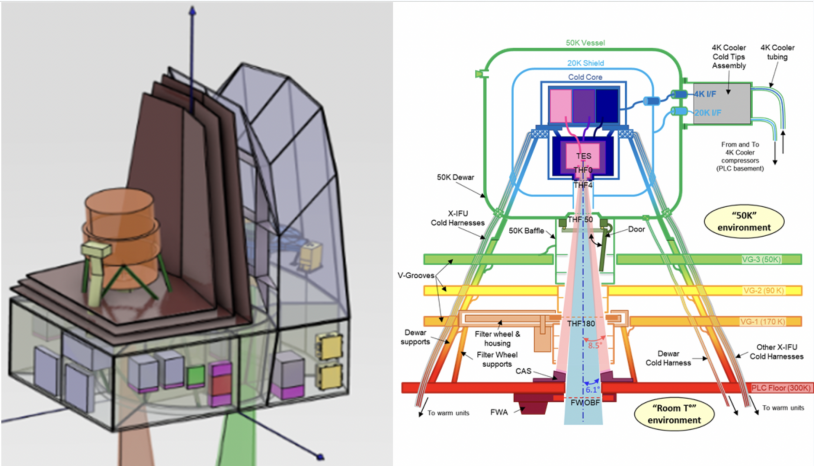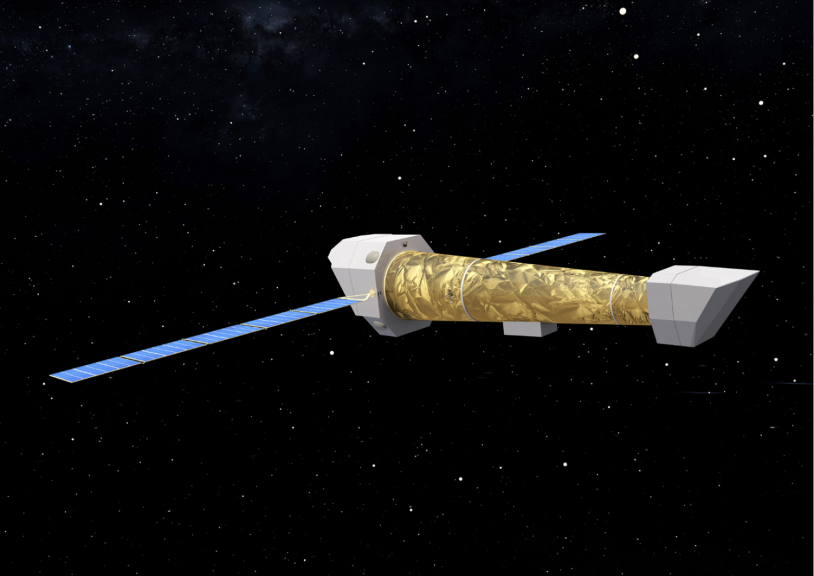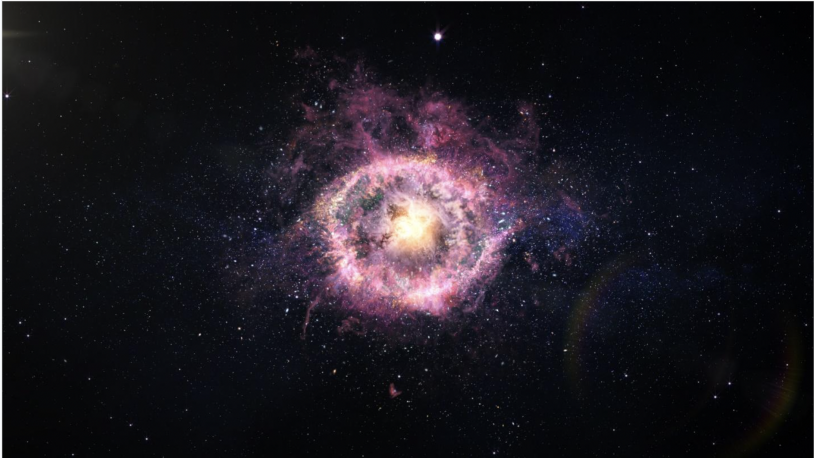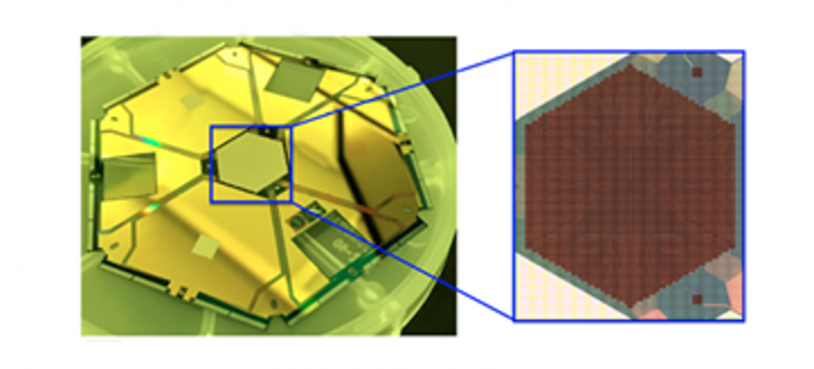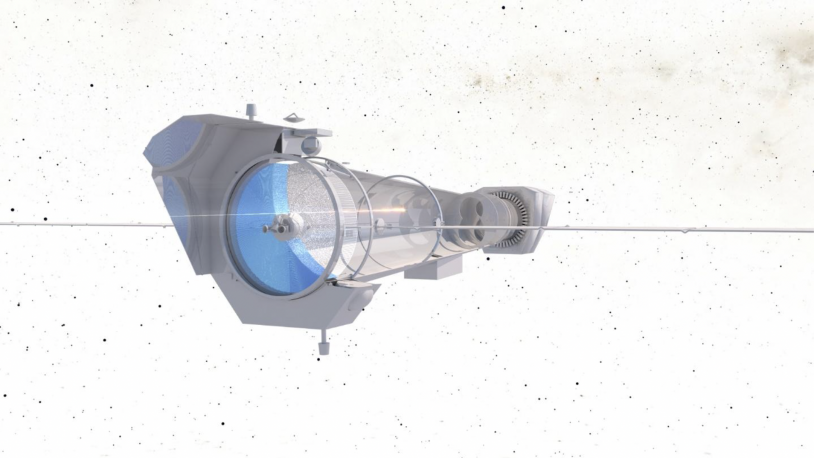X-IFU Instrument
Science goals
The European Space Agency’s future Athena space telescope will be placed into orbit around the L1 Lagrange point 1.5 million kilometres from Earth.
Its payload will comprise two instruments:
- X-ray Integral Field Unit spectrometer (X-IFU)
- Wide Field Imager instrument (WFI)

About X-IFU
X-IFU is a revolutionary X-ray spectrometer set to observe the hottest and most energetic phenomena in the universe: a world of galaxy clusters, black holes and exploding stars. It will be placed in the focal plane of a 12-metre telescope.
X-ray astronomy is the study of astronomical objects and phenomena that emit X-ray radiation. Because Earth’s atmosphere absorbs most of this kind of radiation, X-ray telescopes and detectors have to be operated at high altitude or in space. ESA’s XMM-Newton and NASA’s Chandra are two space observatories currently providing outstanding views of cosmic X-rays. Looking further ahead, the Athena space telescope and its X-IFU instrument will deliver more detailed observations of X-ray sources than ever before.
X-IFU combines high spectral resolution with high-quality imaging. In other words, the instrument will be able to capture images of astrophysical objects in which each image pixel will provide a full spectrum containing a wealth of information. Thanks to its unprecedented capabilities, X-IFU will enable astrophysicists to answer two of the most burning questions about the universe: how did matter come together to form the universe and how do black holes form, grow and shape it? They will achieve this through ground-breaking new insights into the formation and evolution of the large structures of matter in the universe.
X-IFU’s Transition Edge Sensors (TES) will operate like ultrasensitive thermometers measuring heat variations caused by absorption of photons with unprecedented precision. They will be cooled to 50 mK, near absolute zero, using a complex cryogenic chain. In fact, X-IFU’s detection plane will be the coldest place in the universe.
Thousands of these micro-calorimeters are assembled together and cooled to nearly absolute zero (–273.1°C/50 mK) by a complex cooling chain to enhance their sensitivity to slight variations in temperature. The measured temperature increase is converted by superconducting thermometers into an electrical signal read out by high-precision electronics. The signals are then analysed individually to accurately estimate the energy of each X-ray photon, thus revealing the conditions in which they were emitted.
In its baseline configuration, X-IFU’s detection matrix is a set of square 317 x 317-μm2 detectors arranged in a hexagonal pattern to provide a field of view with an equivalent diameter of four arcminutes. In its current configuration, the total pixel count in 1,504, divided into four groups of 376 pixels. Each group has its own independent readout electronics, so that if one fails no more than a quarter of the matrix’s detection capability is impacted. The spectral resolution requirement for the mission is 4 eV, but the design goal for the instrument is 3-3.5 eV to 7 keV.
Thanks to this cutting-edge technology, X-IFU will offer a twofold increase in observing capability over the previous generation of instruments, promising spectacular advances in all areas of science.
In 2022, the Athena mission entered a reformulation phase culminating in a new baseline configuration for the telescope and for X-IFU’s cryogenic architecture. This architecture is built around a passive cooling system in the Payload Compartment (PLC), based on a set of three L-shaped cryogenic radiators, called V-grooves, to provide a 50-K environment to the instrument. It includes a Dewar vessel with an outer envelope at 50 K, housing the instrument’s cold core containing the detector, a remote cryocooler or 4K Cooler, providing active cooling to the inner stages in the 20-K and 4-K ranges, and a multi-stage Adiabatic Demagnetization Refrigerator (ADR), able to cool the detector stage down to 50 mK starting from the 4-K stage.
How X-IFU has changed since the reformulation phase:
